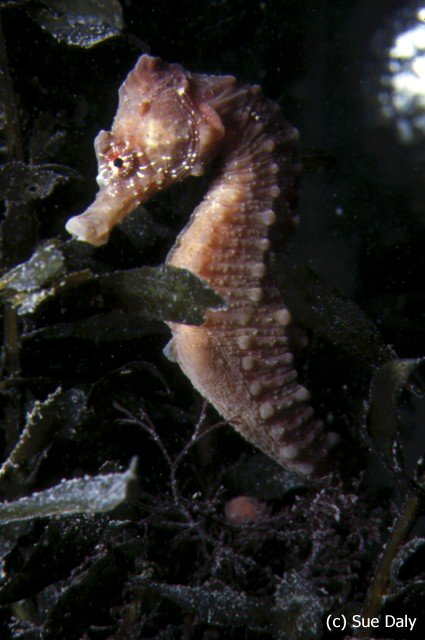Identification:
Typical sea-horse shape, which cannot be confused with the pipe fishes. The
head is bent downwards from the erect body posture, and has a long prehensile
tail that lacks the caudal fin. In this particular species the snout is concave,
and who's length is less than a third of the total head length. This reduction
of the snout, gives the eyes the appearance of being large, ie about half
the length of the snout. The eyes are also able to move independently of
each other and are used to track potential threats and prey.
The dorsal fin is composed of some 17 to 18 rays, with the pectoral having
14 or so. The anal fin is very small, and is almost located opposite the
posterior end of the dorsal fin. Colouration ranges from yellow through to
darkish brown, often reflecting the associated vegetation/substrate.
Breeding:
Males carry eggs in their brood pouches from April to October.
Free-swimming young are to be found during September and into October.
Habitat:
Normally found associated with sea-grasses and sea-weeds of shallow seas,
although may be encountered in deeper water, either having been washed
away by strong currents or on their annual migrations.
Food:
Feeds on small crustaceans sucked up by the snout.
Range:
Northern extent of it's range only just occurs
beyond the Channel Islands, and is much rarer than the long snouted
sea-horse.
Additional Notes:
|
